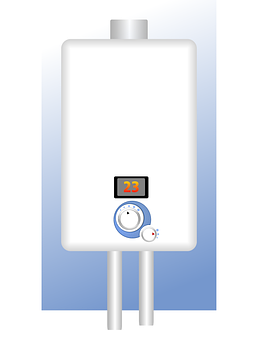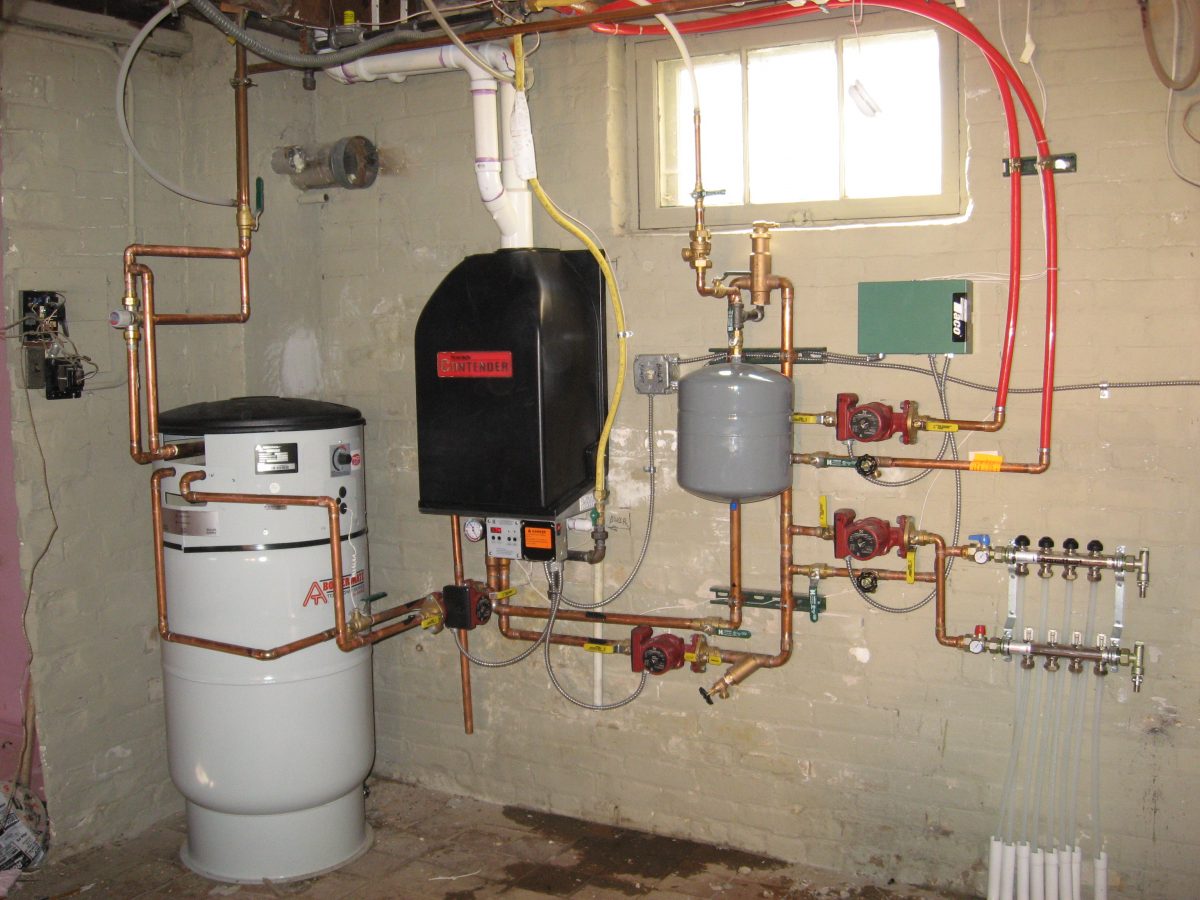Summary
– Domestic hot water: which systems?
– Domestic hot water: which energies?
– Domestic hot water gas: instantaneous water heater, cumulus
– Domestic hot water and electric water heater
– Domestic hot water: solar appliances
– Domestic hot water: the thermodynamic water heater
A distinction is made between the domestic hot water (DHW) production system used for hygiene and the kitchen and a home’s heating system. Domestic hot water is most of the time produced by a water heater, but some appliances, such as a gas boiler, combine these two uses. Moreover, water heaters are of several types: those that produce domestic hot water for a conventional dwelling, water heaters for swimming pools, and water heaters for motor homes.
Which systems of domestic hot water to choose from?
The domestic hot water production system must meet your needs, which vary according to your habits and the number of people under your roof. As for the volume of hot water available, it will vary according to:
– the capacity of your heating system: boiler, heat pump, water heater;
– the principle of your heating system: instantaneous or storage heating;
– the number of water points: one or more bathrooms with shower and bathtub, wash-hand basin…
Note: Regardless of your domestic hot water production model, proper maintenance of the water heater is essential to ensure its proper operation.
What type of energy will produce domestic hot water?
You can choose between several energy sources to supply you with domestic hot water:
– Gas, natural gas being the most economical;
– Electricity, the most expensive system to use;
– Solar energy, often combined with another energy source.
Domestic hot water gas: instantaneous water heater, cumulus
There are two types of gas water heaters for the production of domestic hot water (DHW):
– the instantaneous water heater: domestic hot water is permanently available;
– the cumulus or accumulator: the domestic hot water is heated beforehand and then stored in a tank.
Instantaneous water heater: domestic hot water on demand

These appliances produce hot water on demand, do not have a storage tank, hence their small size. They can be supplied with all types of gas, provided that they comply with the regulations in force:
– Natural gas or town gas is the simplest (and most economical); it does not require any storage.
– Propane or butane, used when there is no connection to the town gas network (also by boat or motor home), requires minimum space for one cylinder or maximum space for an outdoor tank.
Two types of instantaneous water heaters:
– water heater: does not require to be connected to a drain, reserved for a single water point because of its low flow rate;
– Bathroom heater: more powerful than the water heater, requires a connection to an exhaust pipe (chimney or suction cup type), with a larger capacity.
Accumulators: for large quantities of hot water
The gas storage water heater consists of a storage tank for domestic hot water, which is heated for a certain period and then remains constant. To be installed or to be hung on the wall, gas accumulators are sometimes of high capacity. For this reason, they are often chosen for balneotherapy baths and hydromassage showers.
Domestic hot water and electric water heaters
The electric water heater is available in three different models:
1. instantaneous water heater, domestic hot water available at any time;
2. storage water heaters, large quantities of domestic hot water are heated and then stored;
3. low capacity water heater (up to 50 L), between instantaneous and accumulation, immediate comfort and more economical than cumulus.
Instantaneous water heater: for a single hot water point
Small and compact, the electric instantaneous water heater is simple to install and practical; it allows a domestic hot water point isolated from the central hot water production system. The flow rate is low: approximately 3 to 4 L/min of domestic hot water at 40°C.
Warning: instantaneous electric water heaters require considerable electrical power, which imposes a high electricity subscription.
Cumulus: a large volume of domestic hot water
The electric cumulus water heater or the electrical hot water tank is very cumbersome and made up of:
– a perfectly confined tank (an enamel and pressurized tank);
– a thermostat;
– a resistor:
◦ immersion heater type, susceptible to limescale because it is in direct contact with water;
◦ soapstone type: longer-lasting because it is protected in a sheath (no draining of the appliance if the resistance is changed).
It takes a long time to warm up, about 6 to 8 hours, but it remains constant. In the case of an off-peak/full-hour subscription, a heater contactor allows a lower-cost operation.
Good to know: there are double power cumulus units with an additional oversized resistor. This provides a volume of domestic hot water heated in accelerated mode, in addition to off-peak operation.
The low-capacity water heater: continuous hot water
The small capacity water heater can heat a reserve of water quickly, which it maintains at 65°C. Controlled by a thermostat, its operation is more similar to that of a cumulus.
The low capacity water heater is ideal:
– for isolated water points;
– or when the installation does not allow the connection of another hot water production system.
There are wall-mounted models as well as under-sink models.
Domestic hot water: solar appliances
Solar is an energy source that can produce up to 70% of the domestic hot water needed by a family of four people. The price of solar water heaters is still relatively high today, which hinders their development, but it is possible to benefit from subsidies and tax advantages.
Briefly, a solar water heater consists of:
– a hot water tank;
– collectors or tube collectors;
– a transfer unit + pump (in the case of forced circulation);
– a regulation system.
Domestic hot water: the thermodynamic water heater
This type of water heater has an electric storage tank coupled with an integrated heat pump. The principle is simple: the pump recovers calories from the ambient air in the room (preferably a room occupied by heat-generating appliances) used to heat the water contained in the tank.
The initial investment remains very important, but this ecological device delivers domestic hot water at a low cost afterward.

